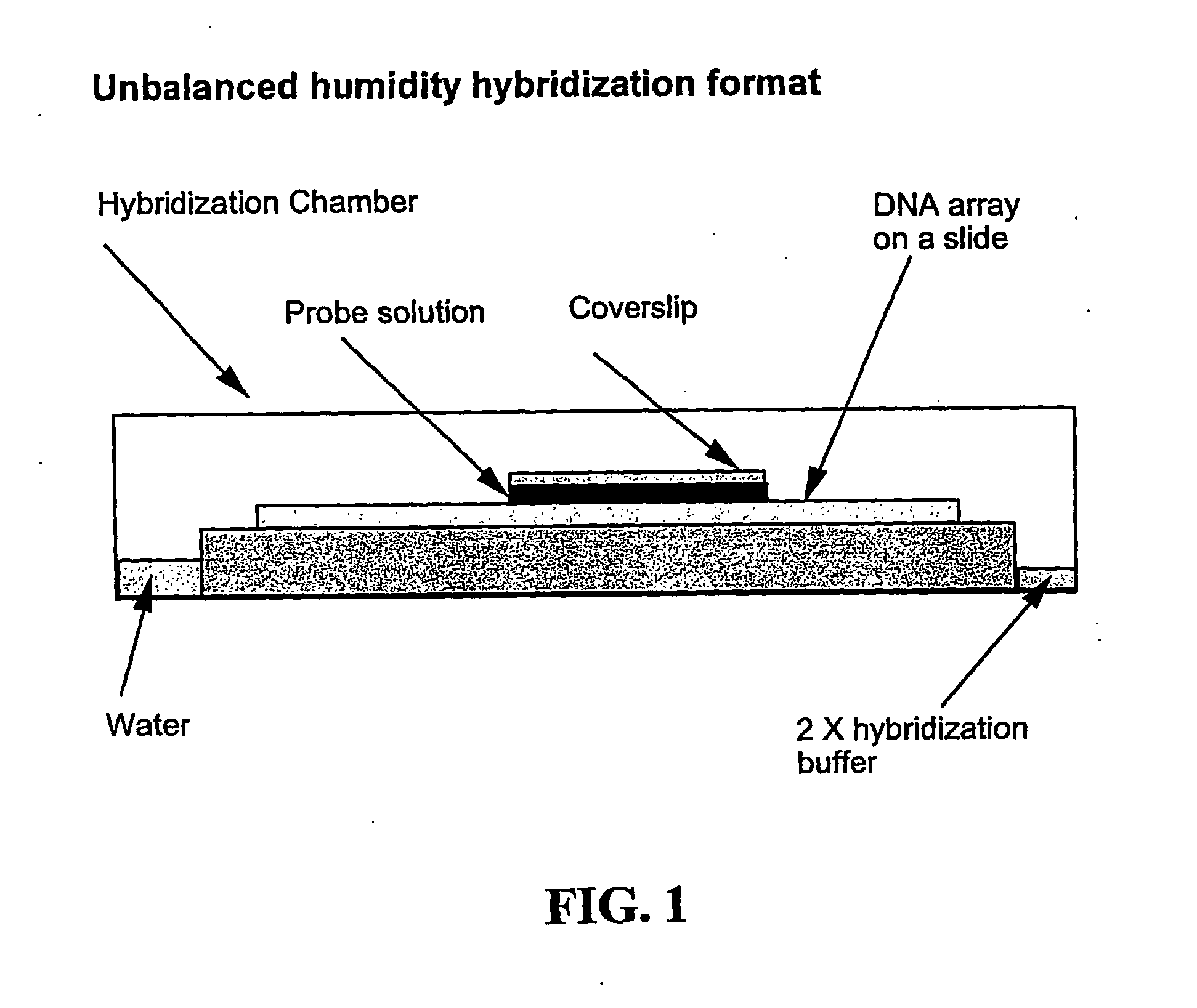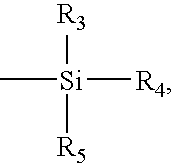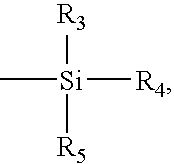Arrays comprising pre-labeled biological molecules and methods for making and using these arrays
a technology of biological molecules and arrays, applied in the field of molecular biology, genetic diagnostics and arrays, can solve problems such as less than optimal suppression
- Summary
- Abstract
- Description
- Claims
- Application Information
AI Technical Summary
Benefits of technology
Problems solved by technology
Method used
Image
Examples
example 1
Making Nucleic Acid Arrays
The following example demonstrates exemplary protocol for making an array of the invention.
Making BAC Microarrays:
BAC clones greater than fifty kilobases (50 kb), and up to about 300 kb, are grown up in Terrific Broth medium. Larger inserts, e.g., clones >300 kb, and smaller inserts, about 1 to 20 kb, are also be used. DNA is prepared by a modified alkaline lysis protocol (see, e.g., Sambrook). The DNA is labeled, as described below.
The DNA is then chemically modified as described by U.S. Pat. No. 6,048,695. The modified DNA is then dissolved in proper buffer and printed directly on clean glass surfaces as described by U.S. Pat. No. 6,048,695. Usually multiple spots are printed for each clone.
Nucleic Acid Labeling and DNase Enzyme Fragmentation:
A standard random priming method is used to label genomic DNA before its attachment to the array, see, e.g., Sambrook. Sample nucleic acid is also similarly labeled. Cy3™ or Cy5™ labeled nucleotides are s...
PUM
| Property | Measurement | Unit |
|---|---|---|
| genomic nucleic acid | aaaaa | aaaaa |
| nucleic acid | aaaaa | aaaaa |
| length | aaaaa | aaaaa |
Abstract
Description
Claims
Application Information
 Login to View More
Login to View More - R&D
- Intellectual Property
- Life Sciences
- Materials
- Tech Scout
- Unparalleled Data Quality
- Higher Quality Content
- 60% Fewer Hallucinations
Browse by: Latest US Patents, China's latest patents, Technical Efficacy Thesaurus, Application Domain, Technology Topic, Popular Technical Reports.
© 2025 PatSnap. All rights reserved.Legal|Privacy policy|Modern Slavery Act Transparency Statement|Sitemap|About US| Contact US: help@patsnap.com



